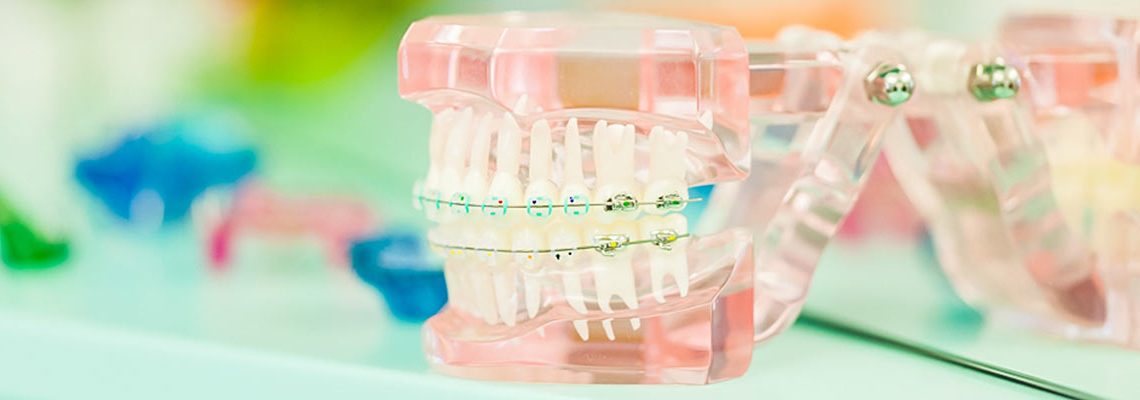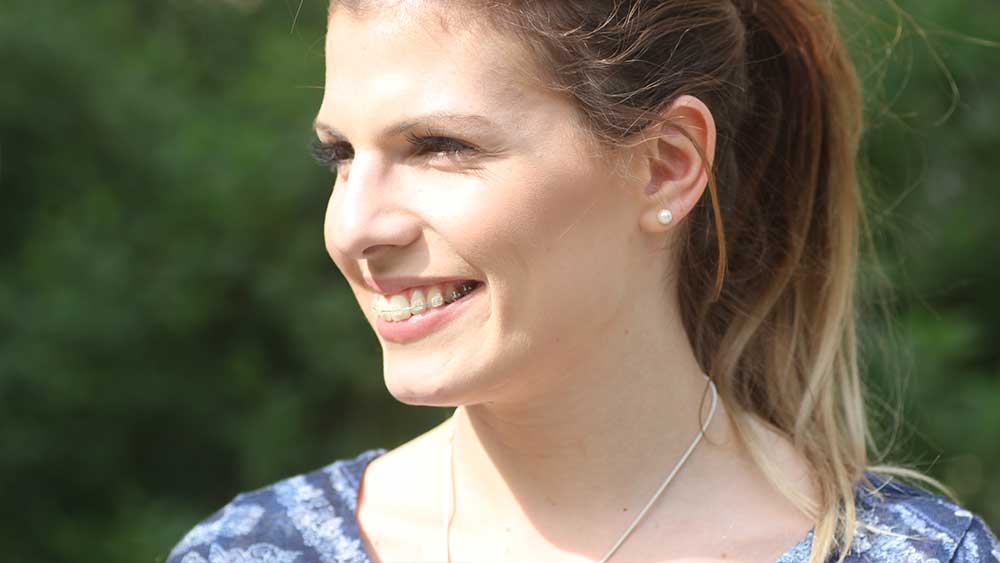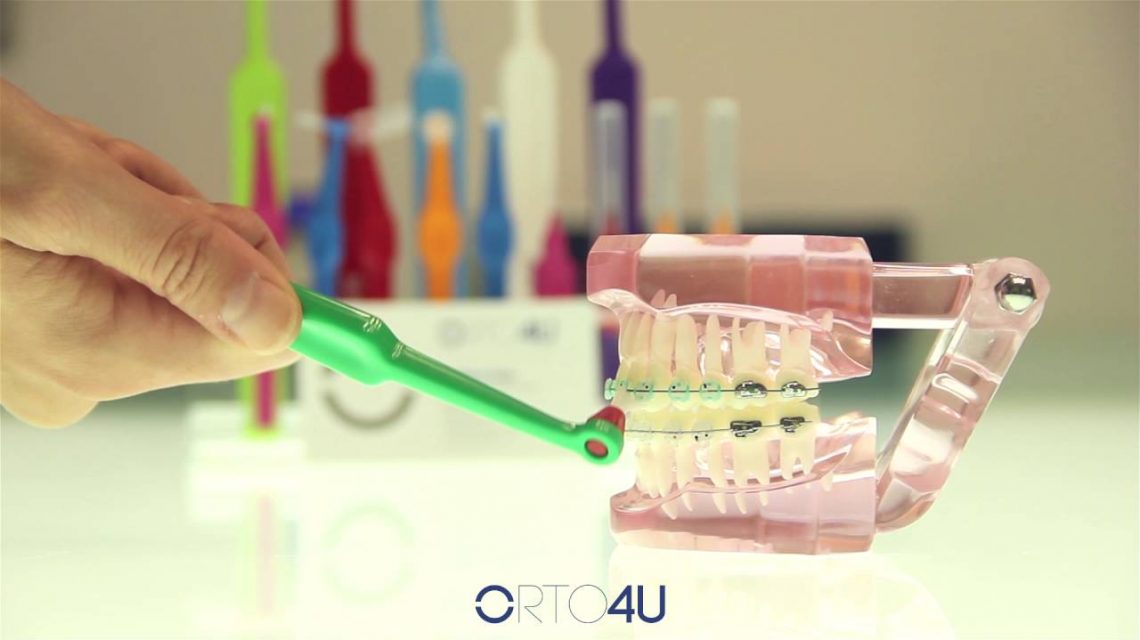You wonder if perhaps you are a candidate for the therapy with the fixed appliance. You're not the only one. Find out today everything you have always been interested in regarding what a fixed orthodontic appliance can help you with, when is the right time to start the therapy, what types of fixed appliances exist, and how to wear them properly.
An attractive smile and healthy, properly positioned teeth are certainly the most desirable for each person's good look, and today this opportunity is more achievable than ever. We share with you here how such a smile is achieved with a fixed orthodontic appliance.

Nowadays, the fixed orthodontic appliance is a completely normal phenomenon, which not only improves the teeth condition and general health of an individual but allows certain adjustments of the fixed appliance to the personal aesthetic taste of each patient - gums and braces in the desired colour are nowadays an everyday thing and make the process of wearing a fixed appliance more enjoyable.
The modern concept of the orthodontic therapy requires the functionality of jaws and teeth, as well as the improved aesthetics of smile and face profile.
By using the fixed orthodontic appliances with children and adults the precise results are achieved in the ideal dental arches, tooth position, and inter-jaw relationship, while the final result is the proper function of the oral system and the ideal aesthetics of the face and smile.

What does a Fixed Orthodontic Appliance Actually do and in What Cases is it Recommended and Used?
A fixed orthodontic appliance is used in the orthodontics for the purpose of correcting the teeth and placing them in the right position, which is crucial for oral hygiene and general health of the teeth, gums and jaws. Proper oral hygiene is much easier to maintain when it comes to properly positioned teeth, which reduces the chance of caries and other periodontal complications.
What Exactly is the Irregular Tooth Position that Requires Treatment?
Most often, there is a lack of space for the teeth placement or in dental arrays, although we often encounter the extra space for teeth placement or looseness of dental arrays.
Incorrect relationship of jaws being recognized as a prognathism or retrognathism of the upper or lower jaw, frequently combined with the incorrect position of the teeth, which altogether is a sufficient reason for the therapy with fixed orthodontic appliances.
When all is considered, a fixed orthodontic appliance helps to achieve stability of the bite and improve the aesthetic appearance of the teeth and face.
When is the Ideal Time to Start the Treatment with the fixed Appliance?
The right time to start wearing braces is the period after the eruption of the second molars (the age of thirteen). For this reason, it is recommended as early visit to the dentist as possible (when the children are between seven and nine years old) in order to start the treatment timely and thus potentially make it more effective and shorter.
However, there are also chances of wearing a fixed appliance in later periods (later decades of life are also the time when the start of fixed appliance therapy is possible under the condition that the teeth are healthy, the dental support apparatus is preserved and the oral hygiene is at a satisfactory level).

What Exactly does a Fixed Orthodontic Appliance Consist of?
The fixed apparatus consists of brackets, bands, tubes and arches. Brackets are placed on the canines, incisors and premolars, bands on the molars, while the arches are connected with both elements - with brackets and bands.
The arches change during the course of the therapy - they are replaced by thicker and stiffer ones so that the teeth would take on more precise position and would be placed in their target place. There are two types of arches: factory bent arches and the individual ones. The individual arches are bent manually according to so-called individual arch maps that are tailored for the individual patient. According to the shape and dimensions they are tailored for each patient individually, an individual wire arch has certain advantages over a factory bent one.
What Types of Fixed Orthodontic Appliances are there?
Fixed orthodontic appliances can be divided into aesthetic and metal, as well as onto classical and self-ligating.
- Aesthetic and metal fixed orthodontic appliance
Fixed orthodontic appliances are made of nickel and titanium alloy, but also of acrylic, plastic, ceramic, and other aesthetic materials. Metal appliances are much more reliable and stable to use, while the mechanical and retentive properties of aesthetic brackets are noticeably weaker - in many cases they may crack or crunch during the therapy. This is why metal fixed appliances are much more used and most orthodontists recommend them to their patients.
- Classical and self-ligating fixed orthodontic appliance
Classic fixed orthodontic appliances involve the use of multicoloured gums/ ligatures, which secure the wire to the brackets. Self-ligating fixed appliances do not contain rubber ligatures but have a built-in wire fastening system, which makes it easy to maintain oral hygiene. There are also lingual brackets that are attached to the inner surface of the tooth and cannot be noticed.
The type of the fixed appliance the patient chooses depends on the diagnosis made by the orthodontist, but also on the patient's desire and the price of the particular fixed appliance.

How does a Patient Feel after Setting up a Fixed Appliance?
The setting up a fixed appliance itself takes on average up to an hour or an hour and a half and is painless.
A few hours after the fixed appliance is set up (6-8 hours), there is a certain tightening and tension when biting, but you should not worry. Bite sensitivity is completely normal in the period the patient is getting used to the presence of the fixed appliance in the mouth. If you find it difficult to cope with this feeling, we advise you not to endure the discomfort which might cause anxiety, but to take some painkillers if necessary. The discomfort will disappear after 3-4 days.
In addition to sensitivity, it can also cause irritation of the mucous membranes of the mouth and tongue. Braces and bands can cause wounds, in which case we suggest you to cover the irritated area with a special wax that your orthodontist will give you. The wax softens in warm water and does not interfere with nutrition after application, and the irritation will soon disappear, and together with it the need for the wax.
How to Keep your Teeth Clean Despite a Fixed Appliance?
Oral hygiene is more important than ever when wearing a fixed appliance. It involves brushing your teeth after each meal and is maintained with a regular and interdental toothbrush, using dental floss and mouthwash. Brushing your teeth involves several steps:
- brushing your teeth with a regular toothbrush in the usual way,
- washing your gums with a regular toothbrush,
- cleaning the teeth under the arch and between the brackets with an interdental brush and dental floss,
- rinsing the mouthwash for one minute,
- make sure you brush your teeth thoroughly before going to bed.
To make brushing teeth as easy and efficient as possible, you should pay attention to what and how you eat. You will need to avoid eating some food to prevent potential tooth decay or damage to the fixed appliance and prolonging the therapy. Certain hard food, such as nuts, seeds, peanuts, and sticky food such as chewing gums, caramels, gummy and hard candies, can damage a fixed appliance whose repair will slow down the therapy and delay the results.
Maintaining the best possible oral hygiene reduces the risk of caries and periodontal disease.
Everything you can eat should be eaten in small bites to make chewing easier and it will also enable keeping the food in the mouth for the shortest period of time possible.
Also, keep in mind that teeth whitening in any form is prohibited during the treatment with fixed appliance. If you follow all the rules related to wearing a fixed appliance, you will act favourably on the results of the therapy and it will pass without further prolonging that can arise from damage made to the orthodontic appliance.

What Happens after Removing your Fixed Appliance ?
The very process of removing the fixed appliance is arranged in one visit and is painless. At the end of the treatment, it is followed by the wearing of a retention appliance (retainer) which helps to preserve the obtained results.
The type of retainer you get depends on the recommendation of your orthodontist.
The period of time a retainer is used depends on the type of the orthodontic anomaly and the age of the patient. It is common for the retention appliance to be worn continuously for four months after the removal of the fixed appliance, followed by the reduction of wearing - for the next two months, it should be worn for 16 hours a day, then only during sleep, and then even less frequently. Regular controls are required to keep track of progress and the new rules of wearing the retainer should be applied on time.
Wearing the retainer after removal of the fixed appliance is of great importance because there is a tendency of restoring the teeth to their original position until the newly acquired position stabilizes with the mineralization of the bone tissue around the teeth.
What does Exactly the Examination Consist of which Determines Whether Wearing a Fixed Orthodontic Appliance is Necessary?
Already during your first visit to the orthodontic office, you can find out if your situation requires fixed appliance therapy, you get acquainted with the diagnostic procedure, you can also agree on the potential therapy, and learn more about setting up a fixed orthodontic appliance.
If you decide to undergo the treatment, at the next examination you will receive instructions for diagnostic X-rays and complete a short questionnaire that will provide your orthodontist with the information about your medical condition and potential reasons for your orthodontic problem. Based on the impressions which are taken, the lab models of the teeth are cast that are analyzed and then the diagnosis and treatment plan is made.
During the third meeting, you receive precise information about the diagnosis and the treatment plan, after which it comes down to you to choose and reflect for a few days about all presented aspects of the treatment and the beginning of the orthodontic treatment. If you decide to start the therapy, at the next examination you will get your fixed orthodontic appliance and your path to a nicer and healthier smile begins.
For the free examination, contact us here.




